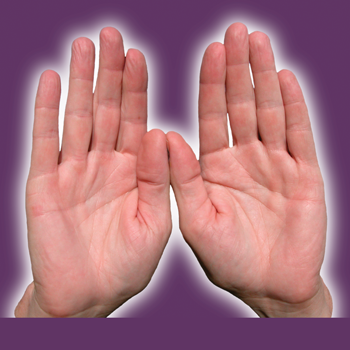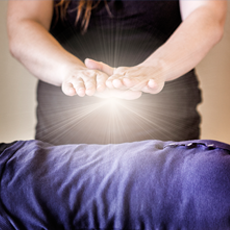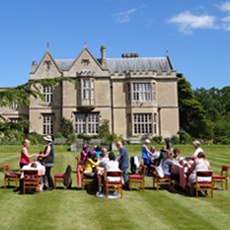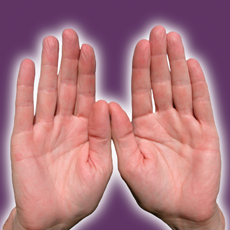by William Lee Rand
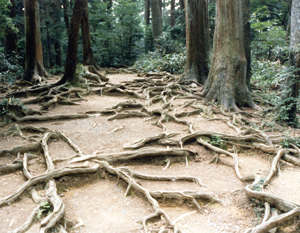 My first experience with metaphysical training was with the Rosicrucians. As a member, I received lessons in the form of monographs, which came in a packet with one to be read and followed each week. One of the things they said in the beginning is that you shouldn't believe something just because someone says it's true or because it's written in a book — that a person can say anything and a printing press will print anything, so you can't base your understanding of what is true on these criteria alone. They went on to say that the best way to learn about something is through experience and that this is especially true for metaphysical ideas and spiritual principles since the purpose of this type of knowledge isn't simply to understand the ideas or to enable you to have an intelligent conversation about them, but to actually use the information to improve your life and to help others. This really impressed me.
My first experience with metaphysical training was with the Rosicrucians. As a member, I received lessons in the form of monographs, which came in a packet with one to be read and followed each week. One of the things they said in the beginning is that you shouldn't believe something just because someone says it's true or because it's written in a book — that a person can say anything and a printing press will print anything, so you can't base your understanding of what is true on these criteria alone. They went on to say that the best way to learn about something is through experience and that this is especially true for metaphysical ideas and spiritual principles since the purpose of this type of knowledge isn't simply to understand the ideas or to enable you to have an intelligent conversation about them, but to actually use the information to improve your life and to help others. This really impressed me.
As the weeks went by, these monographs provided me with more thought provoking questions and new ways of thinking about things. One reading explained how important it is to always ask what a person's ideas are based on; where did they come from? Those who are clear thinkers and have done proper research on the topics they speak or write about will easily be able to answer this question. However, those who have only a casual understanding of the subject matter will not always have clear answers and will sometimes become upset that you are asking such a question. Yet this a valid enquiry and one should never hesitate to ask about it, especially if one is seeking a clear and deep understanding of the topic it covers. Otherwise all you might be getting is little more than rumors and hearsay, which is not useful in helping one decide what is true.
After you discover the origin of the ideas, it is important to think about the quality of the evidence. Does the author claim to be the only authority on the topic or to be the only one who has access to the source of the information, or, on the other hand, has the information been verified by other independent researchers through written records that anyone can access or through other verifiable sources? The rigorous collection and organization of evidence and the verification of the authenticity and veracity of information and its sources is the cornerstone of valid historical research.(1) This level of research takes time and effort and is not something that all authors are willing to do as it is much easier to simply repeat what others have said even though it may not be known whether the information has been verified by sufficient evidence.
Perhaps even more problematic than this aspect, and also one of the reasons why there is so much trouble in the world is that people have not been taught an effective method of determining what is real. Rather, in school, people are taught what the education system wants students to believe is real. Students aren't usually shown how to determine this for themselves. An exception to this is in some forms of higher education such as journalism classes and classes involving scientific research, where valid research methods are taught. But for the most part, the general public has not been taught the value of thinking in this more rigorous way. Because of this people often become conditioned to believe what they are told and because there are sometimes many versions of what is supposed to be real, they end up deciding to believe what everyone else in their peer group believes or what sounds good to them or what they want to believe is real. This is why it's possible for people to believe ideas for which there is very little meaningful evidence.
When researching a topic it is important to be as unbiased as possible and to be willing to give up an idea one has held if new, more accurate and verifiable information has been uncovered. This requires one to have a disciplined mind as some beliefs can be firmly held and therefore difficult to let go of, especially if they support one’s personal philosophy and there is an emotional need for them to be true. Because of this, one’s greatest allegiance must be to the highest standards of evidence and veracity concerning the facts of an issue, rather than the need to cling to and defend a previously held notion or belief. Those researchers with this level of commitment will abandon previously held understandings in favor of higher quality information when it is discovered. This level of research is important to use when we seek to understand the history of Reiki as increasingly more accurate information has been uncovered over time.
In the Reiki world there have been many attempts to accurately portray the history of Reiki. Unfortunately, only a few are based on evidence ascertained in the more complete manner I have previously described. The first history of Reiki we had in the West came from Mrs. Takata and while we honor her as the one who kept Reiki alive so that it could become popular the world over, the history of Reiki she taught contained many details that have proven to be untrue. As an example, in her story of Reiki, she said that Usui Sensei had been the president of Doshisha University in Kyoto, Japan. When I became a Reiki Master in 1989, I was curious about any additional facts we might be able to learn about the founder. So, believing the story Takata told, I wrote a letter to Doshisha University asking about one of their presidents, Mikao Usui. I wanted to discover if they had any additional information about him that could add to our understanding of the kind of person he was. (And quite frankly I wondered why no one had done this previously.) They wrote me back explaining that they had done a very thorough search through all their records and could say quite certainly that he had never been the president of the university, nor had he been on the faculty or even enrolled as a student and that they knew nothing about him at all.(2) This information was very distressing to me. If one of the most central ideas in the story Takata told about the history of Reiki was false, then what other ideas were also false. This bothered me to the extent that I wondered if Takata had made up the whole thing including the idea of Reiki itself.
Further research has revealed that many additional ideas Takata included in her history of Reiki and in how she taught it have also proven to be untrue. She said that Usui Sensei had also attended the University of Chicago and received a degree in theology, that he had been a Christian and was seeking to discover how Jesus had healed when he discovered Reiki, that Reiki is an oral tradition and that the system of Reiki she taught was the unchanged system that had been taught by Usui Sensei.(3) Sadly these points have also proven to be false.
While I realized that we did not have a factual history of Reiki at that time, I also realized that the Reiki energy did heal and therefore was real. Because of this I decided that I would continue to practice and teach Reiki and keep looking for the historical facts.
One of the reasons that Reiki has historically been so difficult to research is due to the fact that when World War II ended and the Japanese were required to unconditionally surrender to the U.S., laws were enacted that banned all Eastern healing methods and required that only Western medical methods be practiced. And while some of the Japanese healing groups such as the acupuncturists were able to continue practicing by creating a government licensing system, the members of the Usui Reiki Ryoho Gakkai.(4) decided that they did not want to go through the process of licensing. So in order to continue practicing, they decided to become a secret society. After that they would only practice at their private meetings and would not talk about Reiki to others outside their group. Because of this, Reiki disappeared from view and was more or less forgotten about by almost everyone outside the group of Gakkai members.(5) Therefore, when people went to Japan and inquired about the system of Reiki started by Usui Sensei no one knew anything about it. Because of this, those who attempted to research Reiki in the ‘80s and early ‘90s were not successful.
Then in 1995, Toshitaka Mochizuki, a Japanese Reiki Master, wrote a book on Reiki that provided a few additional facts about the history such as an original version of the Usui Ideals. In 1997 Reiki Fire was published and it explained how the author, Arjava Petter and his wife Chetna Kobayashi had made contact with the then current president of the Usui Reiki Ryoho Gakkai, Mrs. Kimiko Koyama. The information in the book included the location of Usui Sensei's grave, and photos and a translation of the inscription on the memorial stone. This was the first book that contained meaningful information about the history of Reiki that was verifiable.
As soon as I found out about the book, I contacted Arjava Petter and he invited me to come to Japan. Laurelle Shanti Gaia and I went in September 1997, and Arjava took us to Mt. Kurama and to Mikao Usui's grave. I made two additional trips to Japan, in 1999 along with Walter Lubeck and Arjava Petter to do research for our book, The Spirit of Reiki, and in 2001 to take Reiki I&II from Mrs. Yamaguchi, who had learned Reiki directly from Hayashi Sensei. In 1999 and 2000 I sponsored Arjava and Chetna to come to the US to teach the Japanese Reiki Techniques workshops. It was through these books, workshops and events that verifiable information about the history of Reiki came to be known in the West. Since then additional pieces of the puzzle have been added.
The highest quality information about the history of Reiki comes from the Usui Reiki Ryoho Gakkai. This is based on the fact that the first president of the Gakkai was Usui Sensei and the following four presidents were all Shihans (Reiki Masters) trained by Usui Sensei who are known to have the same knowledge and abilities as he had and were authorized to teach in his place when he was not present.(6) The following four presidents after Usui Sensei were Juzaburo Ushida, Kan'ichi Taketomi, Hoichi Wanami and Yoshibaru Watanabe.(7) Information from the Gakkai has come to us from Arjava Petter who had contact with Kimiko Koyama, the sixth president of the Gakkai and through Hiroshi Doi(8) who is a Gakkai member and has access to the Gakkai archives. Another important source of information is the writing of Tadao Yamaguchi, whose mother Chiyoko and many of his relatives learned Reiki from Hayashi Sensei.(9)
A detailed and referenced history of Reiki based on these research methods is located in Reiki, The Healing Touch and is also published online. The online version is available to anyone who would like to copy and paste it onto his or her website as long as the complete article is used and nothing is added, changed or removed.
1 Charles Busha and Stephen P. Harter, Research Methods in Librarianship: Techniques and Interpretations (Academic Press: New York, NY, 1980).
2 Some said that he might have used a different name or that the university records might have been lost during the war, but additional research included the examination of a list of all the presidents of Doshisha University, the periods of time they were president and biographies of each. There were no periods of time for which there was no president listed and none of the biographies were similar to that of the life of Mikao Usui. http://en.wikipedia.org/wiki/Doshisha_University.
3 Mrs. Takata Speaks, The History of Reiki, CD and transcript (Southfield, MI: Vision Publications, 1979).
4 This is the organization Usui Sensei started in April 1922 to practice and promote Reiki.
5 Tadao Yamaguchi, Light on the Origins of Reiki (Twin Lakes, WI: Lotus Press, 2007), 66.
6 See Reiki News Magazine (Spring 2011), 18 for a photo of Usui Sensei and all twenty Shihans he trained that includes a statement in the photo in Japanese indicating that each is authorized to teach in the same way as Usui Sensei. The exception is Wantanabe who recieved Okuden from Usui Sensei and was given Shinpiden from Ushida after Usui Sensei passed.
7 Walter Lubeck, Frank Arjava Petter, William Lee Rand, The Spirit of Reiki (Twin Lakes, WI: Lotus Press, 2003), 17. This page contains a list of the presidents of the Gakkai and the fact that the first four had been trained by Usui Sensei.
8 Hiroshi Doi, Gendei Reiki-ho (Southfield, MI: Vision Publications, 2013). Previously published but out of print; new addition available Fall 2013.


